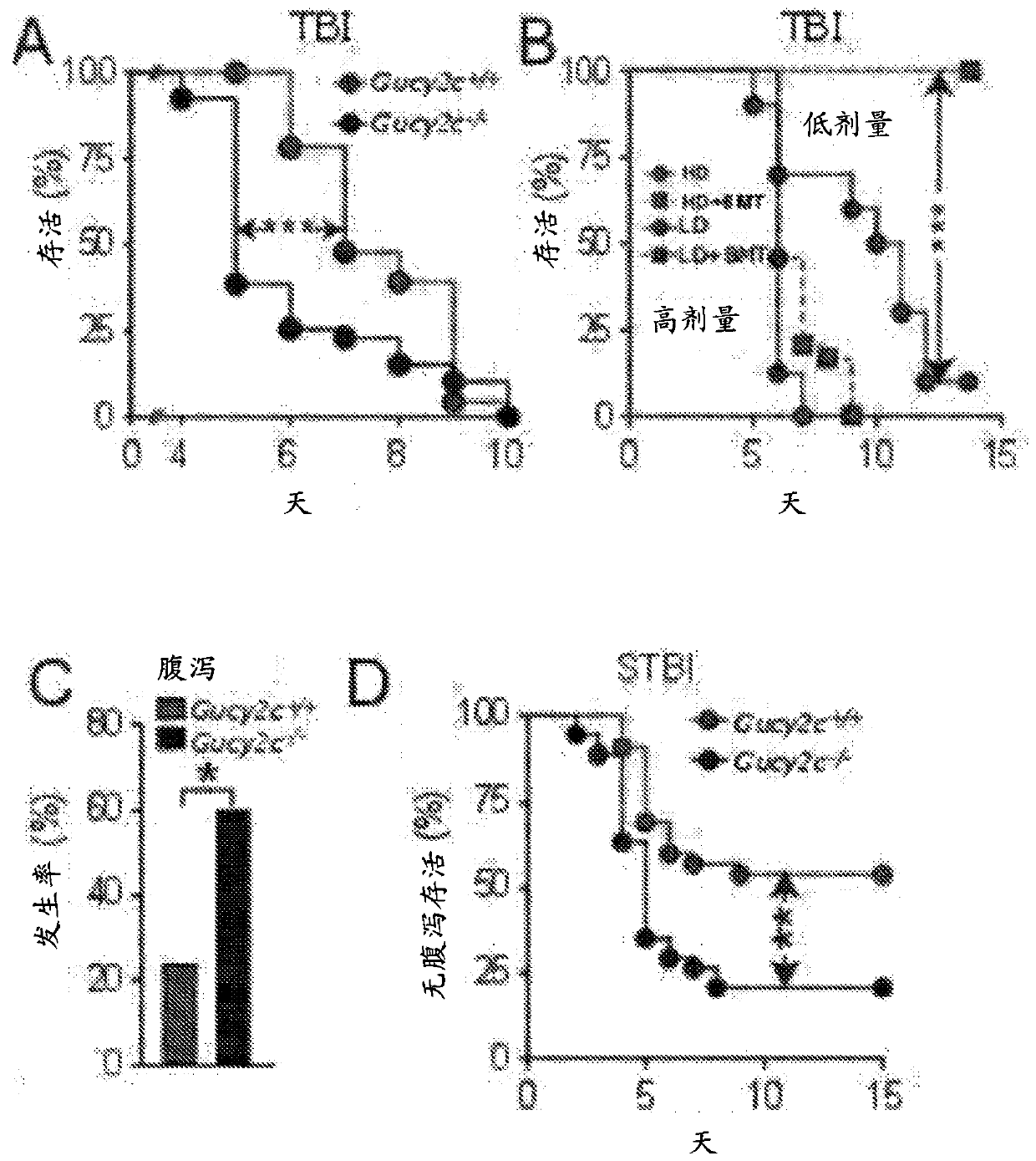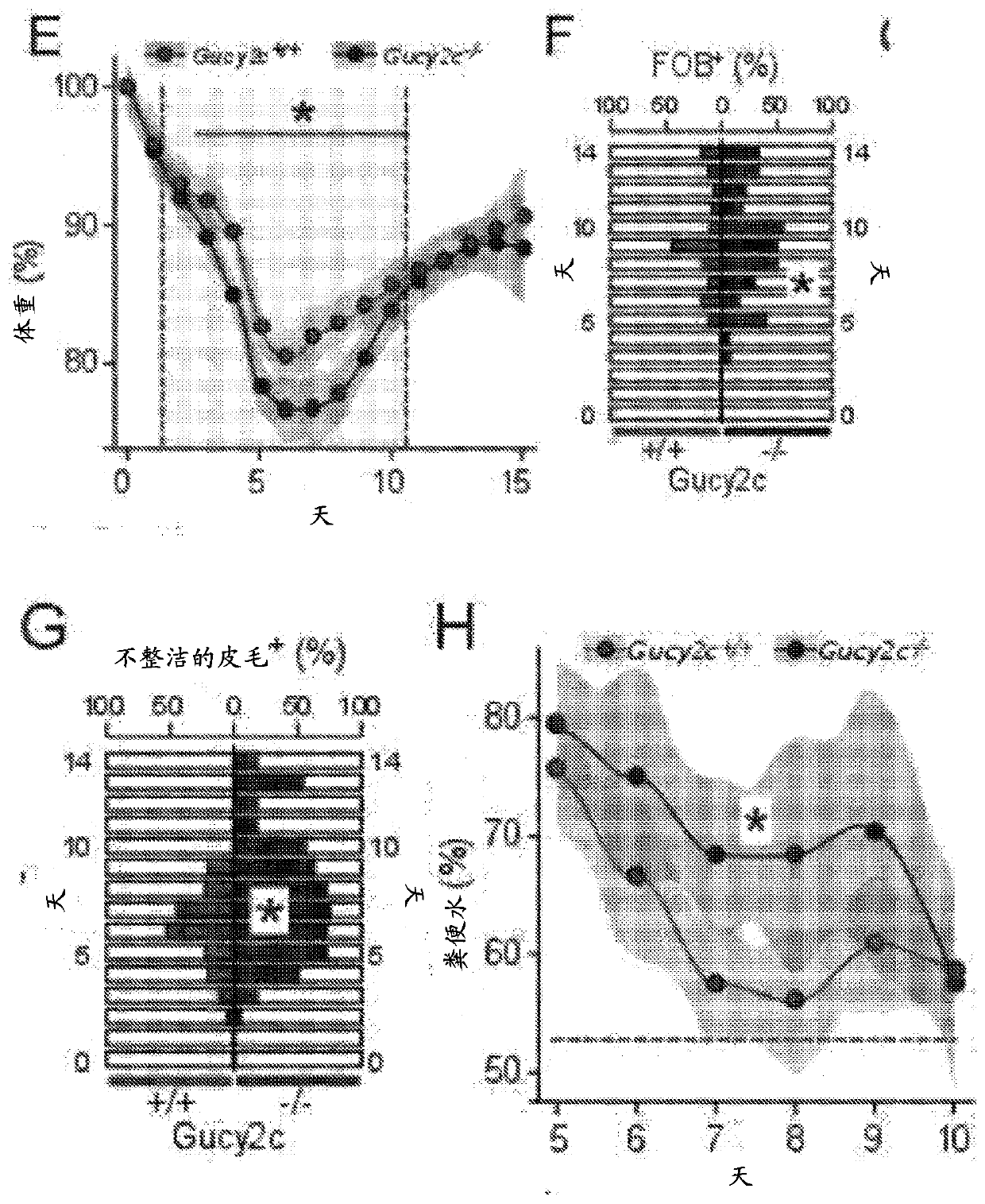Protection of normal tissue in cancer treatment
A cancer and cancer cell technology, applied in drug combinations, medical preparations containing active ingredients, peptide sources, etc., can solve problems that have not been fully elucidated
- Summary
- Abstract
- Description
- Claims
- Application Information
AI Technical Summary
Problems solved by technology
Method used
Image
Examples
Embodiment 1
[0232] Therapeutic radiation and genotoxic chemotherapy are part of the medical equipment for cancer treatment. These genotoxic agents are generally dose-limiting due to damage to normal tissues. We have found that the cell signaling molecule cyclic GMP can prevent genotoxic damage to cells through a p53-dependent mechanism. Here, we describe a method to improve the treatment of colorectal tumors by radiation or chemotherapy by identifying tumors that are GUCY2C-negative or harbor mutant p53. For these tumors, GUCY2C activators (e.g., ST, linaclotide (linaclotide) (SEQ ID NO:59, plecanatide (plecanatide) SEQ ID NO:60)) can be used to leave normal intestinal epithelium, Without affecting the therapeutic efficacy of genotoxic agents (eg radiation, chemotherapy). In this way, higher doses of genotoxic therapy can be administered to kill tumors without causing normal tissue damage. In addition, provided herein are agents that use genotoxic agents in conjunction with elevating c...
Embodiment 2
[0341] Long-lived pluripotent stem cells (ISCs) at the base of intestinal crypts modulate their phenotype for normal maintenance of the epithelium and regeneration after injury. Their long lifespan, lineage plasticity and proliferative potential underlie the necessity for tight homeostatic regulation of the ISC compartment. In this context, the guanylate cyclase C (GUCY2C) receptor and its paracrine ligands regulate intestinal epithelial homeostasis, including proliferation, lineage commitment and DNA damage repair. However, the role of this axis in maintaining the ISC remains unknown. Transgenic mice (Guey2c- / -) enabling analysis of ISCs (Lgr5-GFP) in the presence of GUCY2C depletion were combined with immunoassay techniques and drug treatments to define the role of the GUCY2C signaling axis in supporting ISCs . ISC was reduced in Gucy2c- / - mice, which correlated with loss of active Lgr5+ cells, but reciprocal increase in reserve Bmil+ cells. GUCY2C is expressed in crypt-b...
PUM
 Login to View More
Login to View More Abstract
Description
Claims
Application Information
 Login to View More
Login to View More - R&D
- Intellectual Property
- Life Sciences
- Materials
- Tech Scout
- Unparalleled Data Quality
- Higher Quality Content
- 60% Fewer Hallucinations
Browse by: Latest US Patents, China's latest patents, Technical Efficacy Thesaurus, Application Domain, Technology Topic, Popular Technical Reports.
© 2025 PatSnap. All rights reserved.Legal|Privacy policy|Modern Slavery Act Transparency Statement|Sitemap|About US| Contact US: help@patsnap.com



